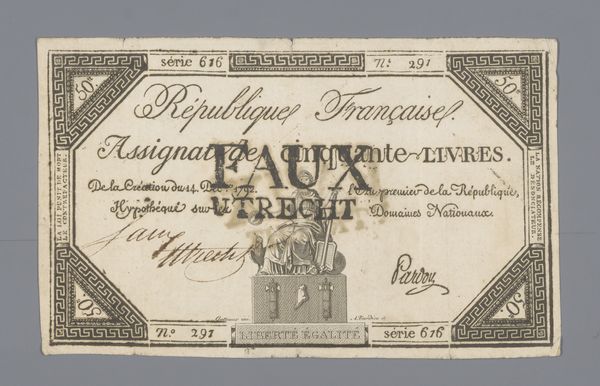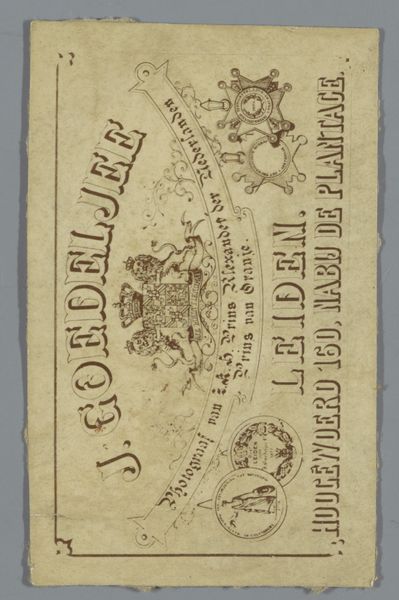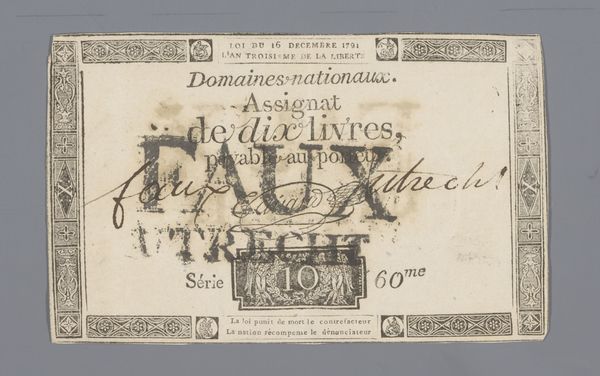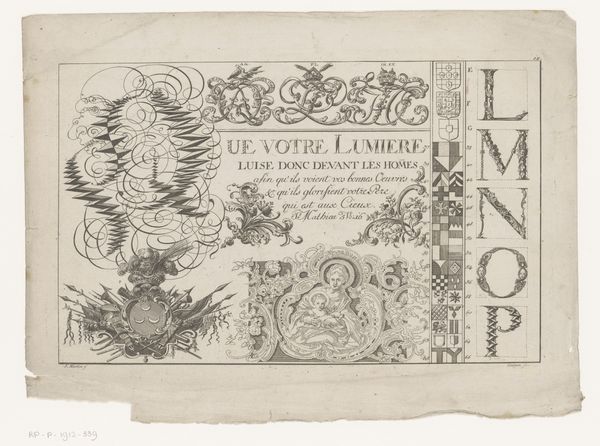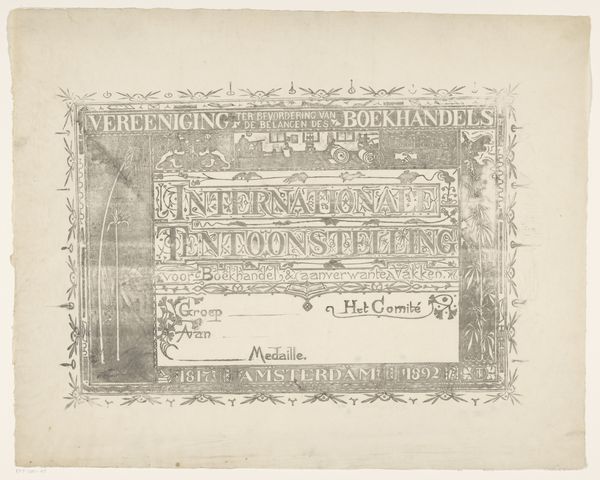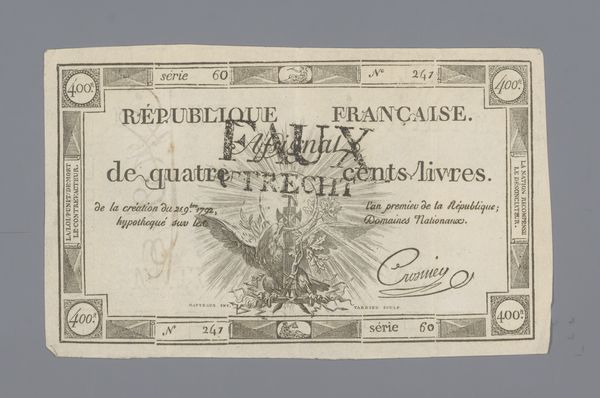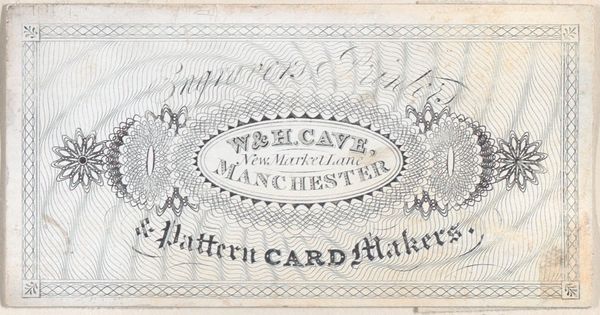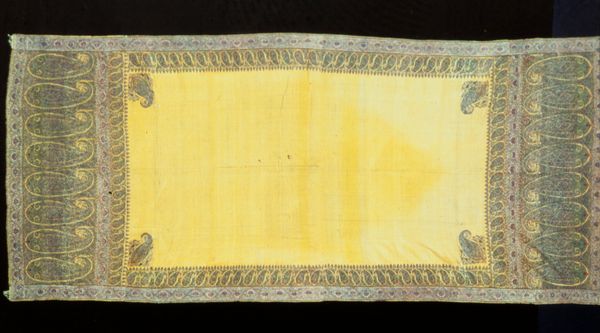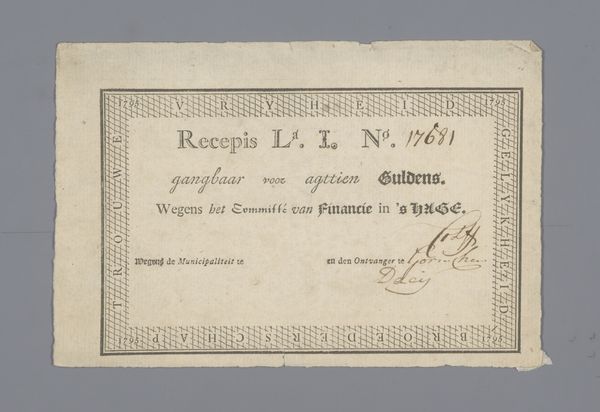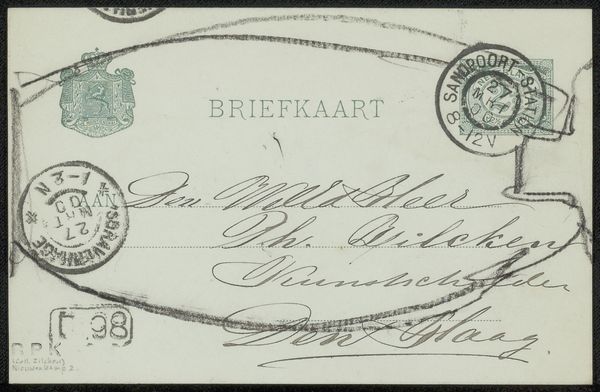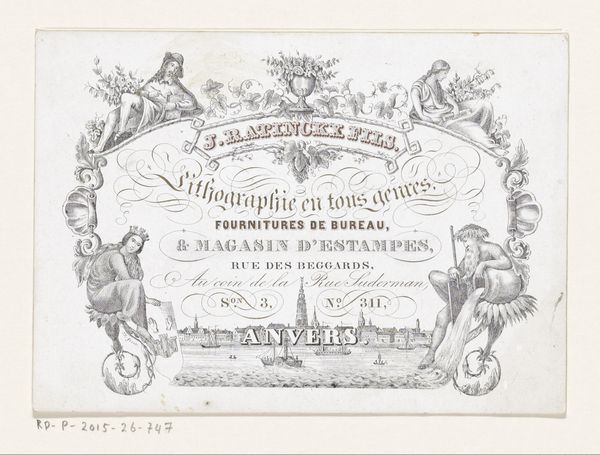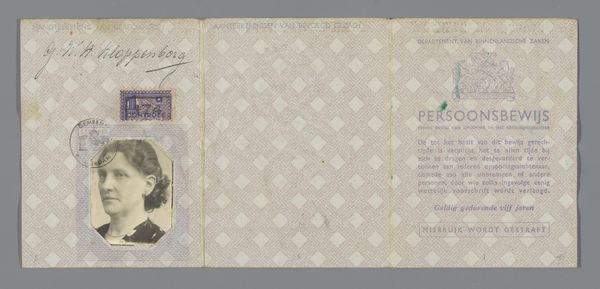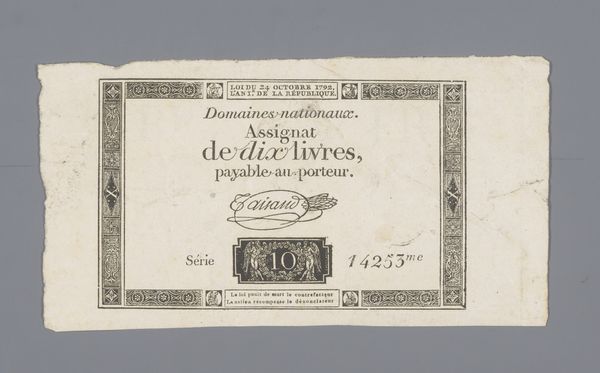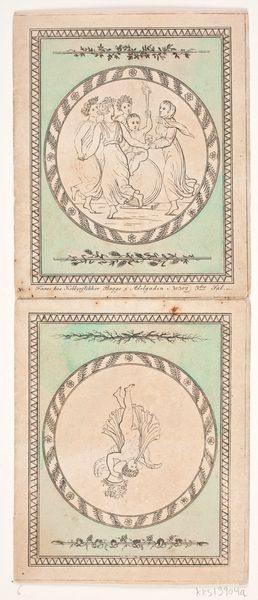
Te Utrecht ongeldig gemaakte assignat van vijftig livres, serie 39, nr. 361 uitgegeven 14 december 1792 Possibly 1792 - 1793
0:00
0:00
graphic-art, print, paper, typography, engraving
#
graphic-art
#
type repetition
#
neoclacissism
#
aged paper
#
homemade paper
# print
#
paper texture
#
paper
#
typography
#
fading type
#
stylized text
#
history-painting
#
golden font
#
design on paper
#
engraving
#
historical font
#
columned text
Dimensions: height 11.5 cm, width 19.1 cm
Copyright: Rijks Museum: Open Domain
Editor: Here we have "Te Utrecht ongeldig gemaakte assignat van vijftig livres", thought to be made around 1792 or 1793, by Nicolas Marie Gatteaux. It's an engraving on paper, so it feels fragile and faded. But what really strikes me is how something intended as money is so explicitly marked as invalid, right? What’s your read on this piece? Curator: You've hit on something key there. It’s currency, yet it screams its own worthlessness. That oversized stamp— "FAUX UTRECHT"—slaps across the neoclassical elegance of the original design like a rude awakening. It reminds us that even the most official-looking documents are just paper promises, especially during times of revolution and upheaval. Can you feel that tension between order and chaos simmering just beneath the surface? Editor: Definitely! It's like they tried so hard to make it look legitimate, with all the stylized text and borders. Curator: Exactly! And the goddess figure…that's meant to evoke stability and trust. But the “faux” mark defaces those ideals. The French Revolution was this incredible, chaotic attempt to reinvent society. Printing money was one part, but maintaining public confidence…that's another story, isn't it? I think Gatteaux's piece exposes that very raw nerve. It makes me wonder about all the dreams printed on paper… how many turned out to be invalid, ultimately? Editor: That's a powerful point. It's more than just a piece of currency, it’s a statement about that whole period. It feels incredibly relevant even today, thinking about economic instability. Curator: Precisely! And art like this, art that carries history etched into every line and mark, asks us not just to look, but to truly *see*. Thanks for the sharp read. Editor: Thank you. I definitely have a better sense of the turmoil it represents now!
Comments
No comments
Be the first to comment and join the conversation on the ultimate creative platform.
